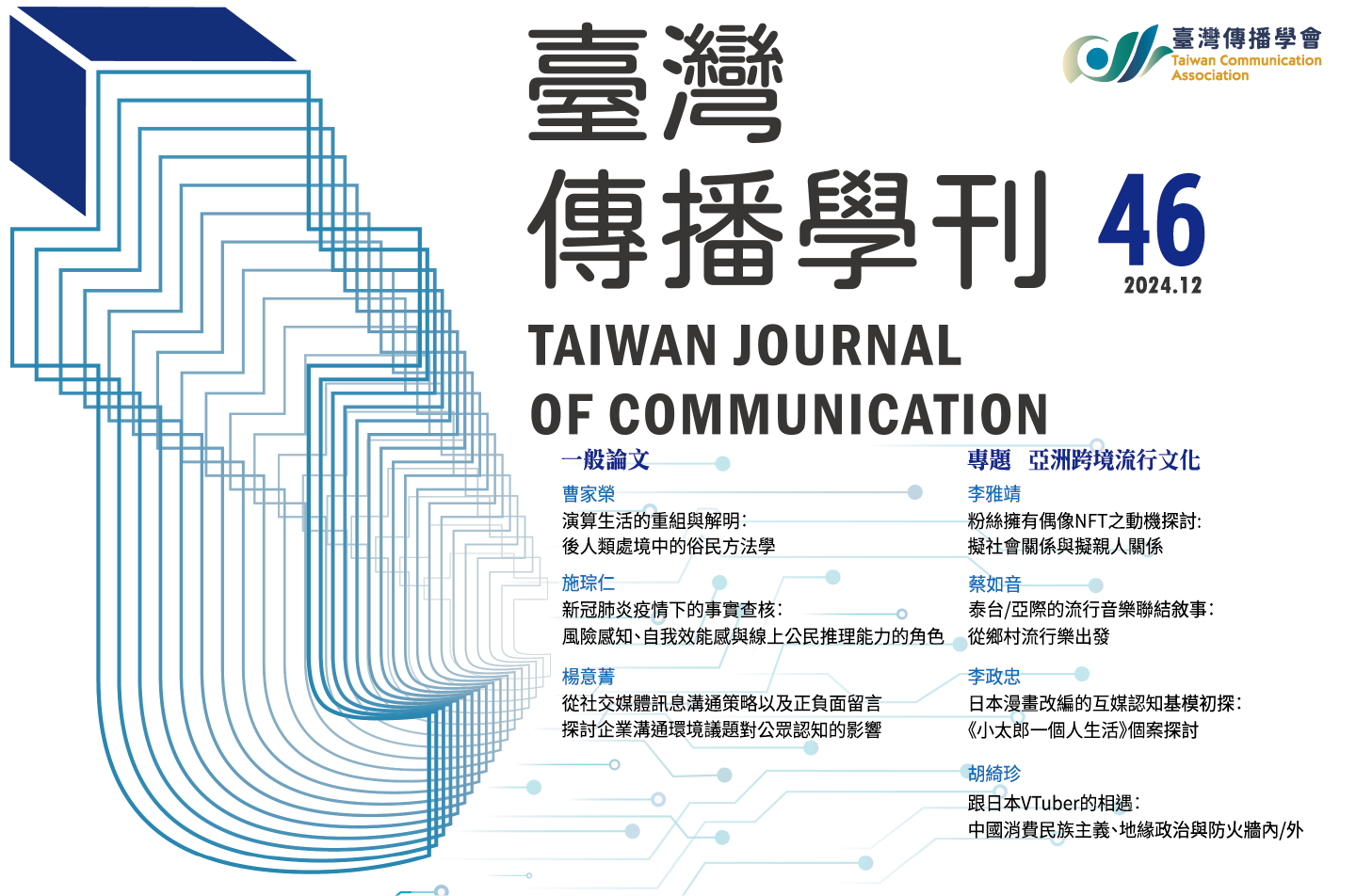 閱覽人數: 3198
閱覽人數: 3198
December
2024
No. 46
亞洲跨境流行文化
Cross-border popular culture in Asia頁數:226 - 270
作者(中)
李政忠
作者(英)
Cheng-Chung, Lee
關鍵詞(中)
日本漫畫改編、互媒性、忠實呈現、媒介專屬性、認知基模
關鍵詞(英)
manga adaptation, intermediality, fidelity, medium specificity, cognitive schema
中文摘要
本研究結合互媒性的理論基礎以及認知科學的觀點,透過日漫改
編個案分析試圖了解改編認知機制。主要結果顯示(1)媒介屬性相似
程度的感知會影響忠實呈現的評估;(2)個人偏好習慣會降低改編認
知基模的影響;(3)失敗案例記憶會形成僵固化的改編認知捷思;(4)
「眞實感」的感知程度與詮釋差異會影響眞人版改編的評價;以及(5)
改編作品觀看前後會出現「互媒性定錨策略」與「互文性定錨策略」的
轉換。
編個案分析試圖了解改編認知機制。主要結果顯示(1)媒介屬性相似
程度的感知會影響忠實呈現的評估;(2)個人偏好習慣會降低改編認
知基模的影響;(3)失敗案例記憶會形成僵固化的改編認知捷思;(4)
「眞實感」的感知程度與詮釋差異會影響眞人版改編的評價;以及(5)
改編作品觀看前後會出現「互媒性定錨策略」與「互文性定錨策略」的
轉換。
英文摘要
The present study combined cognitive perspectives and intermediality
theory to investigate the cognitive mechanisms underlying viewers’
reception of Japanese manga adaptations to other media. The results from a
case study regarding the adaptation of Kotaro Lives Alone provide the
following findings. First, viewers’ assessment of fidelity heavily depends on
their perception of the adapted medium’s specificity or similarity to the
source material. Second, personal preferences reduce the applicability of
cognitive schemas to the understanding of the reception of such adaptations.
Third, memories of unsuccessful adaptations may cause viewers to form
rigid heuristic frameworks. Fourth, viewers assess live-action adaptations
on the basis of how well these adaptations stay true to the source material.
Finally, viewers’ intermedial and intertextual anchoring strategies may
change after they view a manga adaptation.
theory to investigate the cognitive mechanisms underlying viewers’
reception of Japanese manga adaptations to other media. The results from a
case study regarding the adaptation of Kotaro Lives Alone provide the
following findings. First, viewers’ assessment of fidelity heavily depends on
their perception of the adapted medium’s specificity or similarity to the
source material. Second, personal preferences reduce the applicability of
cognitive schemas to the understanding of the reception of such adaptations.
Third, memories of unsuccessful adaptations may cause viewers to form
rigid heuristic frameworks. Fourth, viewers assess live-action adaptations
on the basis of how well these adaptations stay true to the source material.
Finally, viewers’ intermedial and intertextual anchoring strategies may
change after they view a manga adaptation.